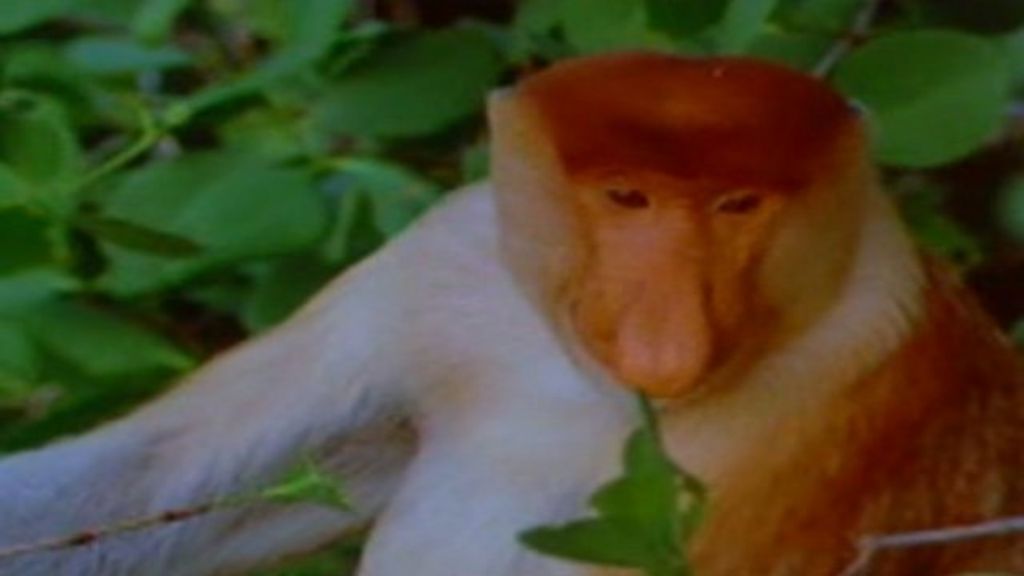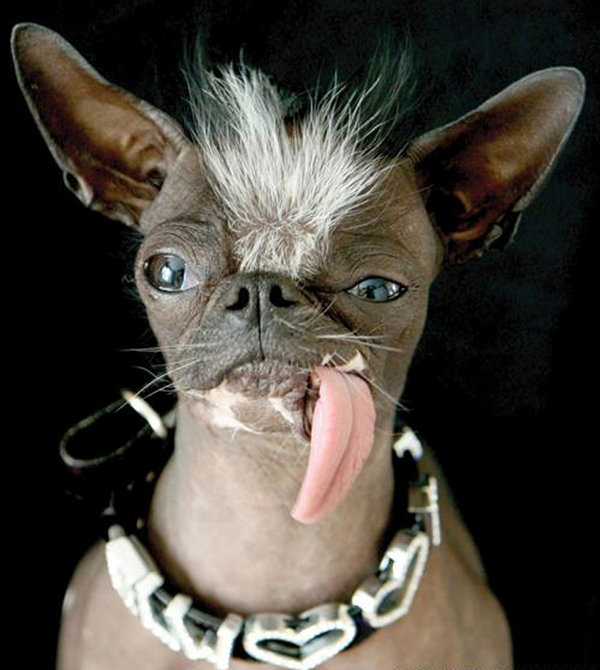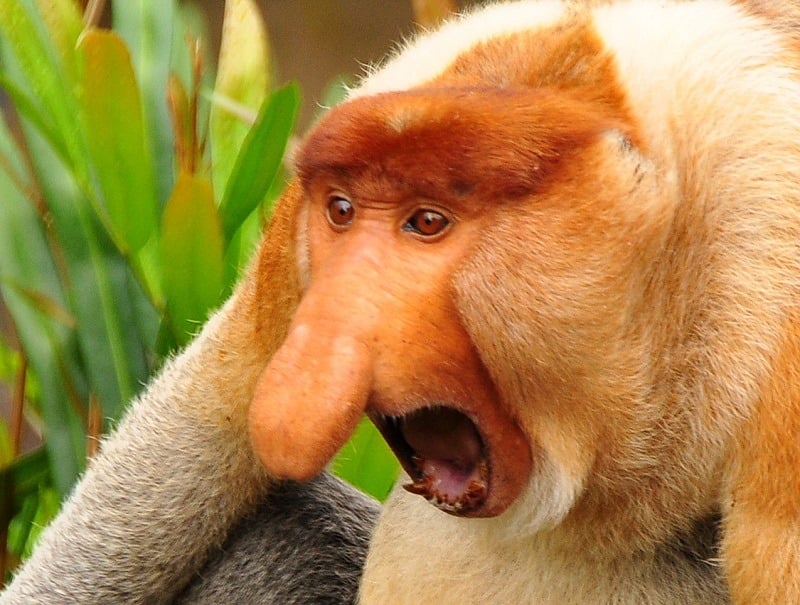Unveiling The Truth Behind The Controversial Title
In the realm of wildlife, certain species have captured the attention of both scientists and the public due to their unique and intriguing characteristics. Among these is the Proboscis Monkey (Nasalis larvatus), a Southeast Asian primate renowned for its unusual and prominent nose. While the Proboscis Monkey's distinctive feature has garnered significant interest, it has also led to an unfortunate and inaccurate label: "the ugliest monkey in the world."
The notion of labeling a creature as "ugly" or "beautiful" is highly subjective and culturally dependent. Beauty and aesthetic appeal are concepts influenced by societal norms, personal preferences, and cultural perceptions, which vary widely across different societies and time periods. It is important to recognize that judging the physical appearance of an animal using human standards of beauty is not only arbitrary but also perpetuates anthropocentric views that prioritize human aesthetic values over the intrinsic worth of other species.
Moving beyond the superficial and acknowledging the intrinsic value of all life, let us delve into the fascinating world of the Proboscis Monkey, appreciating its unique adaptations and ecological significance.
The Ugliest Monkey in the World
Moving beyond the superficial label, let's explore some key points about the Proboscis Monkey:
- Unique and prominent nose
- Southeast Asian primate
- Ecological significance
These points highlight the Proboscis Monkey's distinctive features, geographic distribution, and its important role in its ecosystem.
Unique and prominent nose
The Proboscis Monkey's most distinctive feature is its long and pendulous nose, which is particularly prominent in males. This unique adaptation has been the subject of much fascination and speculation, and several hypotheses have been proposed to explain its function.
- Enhanced vocalizations:
The Proboscis Monkey's large nose may act as a resonator, amplifying and enhancing its vocalizations. This could be advantageous in dense forests, where communication over long distances is crucial for maintaining social bonds and defending territories.
- Sexual selection:
The size and shape of the nose may play a role in mate selection. Larger noses may be perceived as more attractive by females, indicating a male's overall health and reproductive fitness.
- Thermoregulation:
The Proboscis Monkey's nose may also play a role in thermoregulation. Its extensive surface area allows for efficient heat dissipation, which could be advantageous in the hot and humid climate of Southeast Asia.
- Social signaling:
The nose may also be used for social signaling. Different postures and movements of the nose may convey specific messages or emotions to other members of the group.
While these hypotheses provide plausible explanations for the Proboscis Monkey's unique nose, further research is needed to fully understand its precise functions and significance.
Southeast Asian primate
The Proboscis Monkey is native to the Southeast Asian islands of Borneo and Kalimantan. It inhabits coastal and mangrove forests, as well as freshwater swamp forests and peat swamp forests. These habitats provide the Proboscis Monkey with an abundance of food resources, including fruits, leaves, and seeds.
- Endemic species:
The Proboscis Monkey is an endemic species, meaning that it is found nowhere else in the world. This makes it a unique and important part of the Southeast Asian ecosystem.
- Arboreal lifestyle:
The Proboscis Monkey is primarily arboreal, spending most of its time in trees. It is an agile climber and jumper, using its long limbs and tail to navigate through the forest canopy.
- Social structure:
Proboscis Monkeys live in social groups of varying sizes. These groups typically consist of several adult males, multiple females, and their offspring. The males establish and maintain dominance hierarchies, and they play a role in defending the group's territory.
- Conservation status:
The Proboscis Monkey is classified as an endangered species by the International Union for Conservation of Nature (IUCN). Its populations are threatened by habitat loss, fragmentation, and hunting.
Conservation efforts are underway to protect the Proboscis Monkey and its habitat. These efforts include establishing protected areas, implementing anti-poaching measures, and raising awareness about the importance of this unique primate.
Ecological significance
The Proboscis Monkey plays an important role in the Southeast Asian ecosystem. As a frugivore, it consumes a wide variety of fruits and seeds, aiding in seed dispersal and forest regeneration. This helps maintain the diversity and health of the forest ecosystem.
- Seed dispersal:
The Proboscis Monkey's diet consists mainly of fruits. As it moves through the forest, it consumes these fruits and disperses their seeds through its feces. This helps to regenerate and maintain the diversity of plant life in the forest.
- Pollination:
While feeding on fruits and flowers, the Proboscis Monkey also contributes to pollination. As it moves from tree to tree, pollen is transferred to its fur and body, which can then be transferred to other flowers, aiding in plant reproduction.
- Ecosystem engineer:
The Proboscis Monkey's activities can also shape the structure and composition of the forest. For example, its feeding habits can influence the abundance and distribution of certain plant species. Additionally, its nesting behavior can create tree cavities that provide habitat for other animals.
- Prey for predators:
The Proboscis Monkey is also a prey species for a variety of predators, including crocodiles, pythons, and clouded leopards. This helps to maintain a balance in the ecosystem and prevents any one species from becoming too dominant.
Overall, the Proboscis Monkey plays a vital role in maintaining the ecological balance and biodiversity of the Southeast Asian forests. Its unique adaptations and behaviors contribute to the overall health and resilience of these ecosystems.
FAQ
Here are some frequently asked questions about the Proboscis Monkey, also known as "the ugliest monkey in the world":
Question 1: Why is the Proboscis Monkey called the ugliest monkey?
Answer: The label "ugliest monkey" is a subjective and culturally dependent judgment. It reflects a narrow and anthropocentric view of beauty that prioritizes certain physical characteristics over the intrinsic value of the species. This label is not only inaccurate but also perpetuates harmful stereotypes and reinforces the idea that animals can be ranked based on human aesthetic standards.
Question 2: Where does the Proboscis Monkey live?
Answer: The Proboscis Monkey is native to the Southeast Asian islands of Borneo and Kalimantan. It inhabits coastal and mangrove forests, as well as freshwater swamp forests and peat swamp forests.
Question 3: What is unique about the Proboscis Monkey's nose?
Answer: The Proboscis Monkey has a long and pendulous nose, which is particularly prominent in males. This unique adaptation may play a role in vocalizations, sexual selection, thermoregulation, and social signaling.
Question 4: What is the Proboscis Monkey's ecological significance?
Answer: The Proboscis Monkey plays an important role in the Southeast Asian ecosystem. As a frugivore, it aids in seed dispersal and forest regeneration. It also contributes to pollination and acts as an ecosystem engineer. Additionally, it is a prey species for various predators, helping to maintain a balance in the ecosystem.
Question 5: Is the Proboscis Monkey endangered?
Answer: Yes, the Proboscis Monkey is classified as an endangered species by the International Union for Conservation of Nature (IUCN). Its populations are threatened by habitat loss, fragmentation, and hunting.
Question 6: What can be done to protect the Proboscis Monkey?
Answer: Conservation efforts are underway to protect the Proboscis Monkey and its habitat. These efforts include establishing protected areas, implementing anti-poaching measures, raising awareness about the importance of this unique primate, and supporting sustainable development practices in its range countries.
Closing Paragraph for FAQ:
The Proboscis Monkey is a fascinating and unique creature that plays an important role in the Southeast Asian ecosystem. It is important to recognize the intrinsic value of all species and to appreciate the Proboscis Monkey for its unique adaptations and ecological significance, rather than labeling it based on subjective and culturally dependent notions of beauty.
In addition to learning about the Proboscis Monkey, there are several things you can do to help protect this endangered species and its habitat:
Tips
Here are some practical tips on how you can help protect the Proboscis Monkey and its habitat:
Tip 1: Reduce your consumption of products that contribute to deforestation.
The Proboscis Monkey's habitat is threatened by deforestation, often driven by the production of commodities such as palm oil, timber, and paper. By reducing your consumption of these products, you can help reduce the demand for them and minimize the impact on the Proboscis Monkey's habitat.
Tip 2: Support organizations working to protect the Proboscis Monkey and its habitat.
Several organizations are working to protect the Proboscis Monkey and its habitat. You can support their efforts by donating money, volunteering your time, or spreading awareness about their work.
Tip 3: Choose sustainable travel options when visiting Southeast Asia.
If you plan to visit Southeast Asia, choose tour operators that prioritize sustainable practices and minimize their impact on the environment. This can help protect the Proboscis Monkey's habitat and ensure that future generations can appreciate this unique creature.
Tip 4: Educate yourself and others about the Proboscis Monkey and its importance.
The Proboscis Monkey is a fascinating and endangered species that deserves our attention and protection. By educating yourself and others about this unique primate, you can help raise awareness about its plight and inspire others to take action to protect it.
Closing Paragraph for Tips:
By following these tips, you can make a positive contribution to the conservation of the Proboscis Monkey and its habitat. Every small action can make a difference in protecting this endangered species and ensuring its survival for future generations.
The Proboscis Monkey is a unique and valuable part of the Southeast Asian ecosystem. By appreciating its intrinsic worth, protecting its habitat, and supporting conservation efforts, we can help ensure that this fascinating creature continues to thrive in the wild.
Conclusion
The Proboscis Monkey, often referred to as "the ugliest monkey in the world," is a fascinating and unique creature that deserves our respect and admiration. Moving beyond superficial judgments of beauty, we should recognize the intrinsic value of all species and appreciate the Proboscis Monkey for its unique adaptations and ecological significance.
This article has highlighted several key points about the Proboscis Monkey:
- Its distinctive and prominent nose, which may play a role in vocalizations, sexual selection, thermoregulation, and social signaling.
- Its status as a Southeast Asian primate, inhabiting coastal and mangrove forests, freshwater swamp forests, and peat swamp forests.
- Its ecological significance as a seed disperser, pollinator, ecosystem engineer, and prey species.
Despite its unique features and ecological importance, the Proboscis Monkey is an endangered species, facing threats such as habitat loss, fragmentation, and hunting. Conservation efforts are underway to protect this remarkable primate and its habitat, including establishing protected areas, implementing anti-poaching measures, and raising awareness about its importance.
Closing Message:
The Proboscis Monkey is a reminder that beauty is subjective and that the value of a species extends far beyond its physical appearance. By appreciating the diversity of life on Earth and taking action to protect endangered species, we can help ensure a future where all creatures, including the so-called "ugliest monkey," can thrive and fulfill their important roles in the natural world.
Hes A Good Man Savannah A Good Man
I Think You Should Leave Mud Pie
El Payaso De La Toledo

Proboscis monkey on ugly animal list BBC News

Rest in Peace, Elwood, ‘World’s Ugliest Dog’ The New York Times

The World's Ugliest Animals
ncG1vNJzZminopq0eHrSbGWuq12ssrTAjGtlmqWRr7yvrdasZZynnWTBqbGMrp6loZWowW65zqeinrFdnrtuwMeeZLCnoqGxb7TTpqM%3D